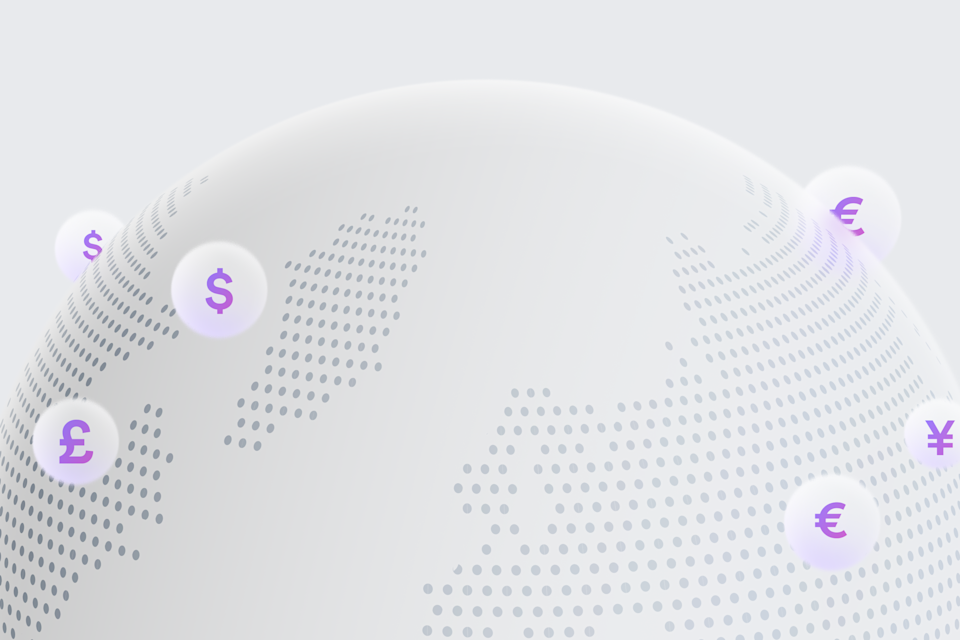How embracing modern payments can optimize the customer experience

Zachary Filler
Airwallex Platform Strategist

How customer experience intersects with international expansion to fuel growth
Running an eCommerce business or marketplace is thrilling and rewarding but increasingly difficult as competition grows and customers become more particular. So particular that even after they’ve reached your site and added some products to their cart, they’ll abandon it 7 out of 10 times! That’s 70 percent!
If a customer experiences even one inconvenience, they’re more likely to abandon their cart than not.
This makes international expansion trickier than simply widening the target audience of your Facebook ads. If your website’s experience isn’t up to par with the local competition, your cart conversion will fall off a cliff, and your ad spend go wasted. So if you want to get another spurt of growth through international expansion now that the pandemic-fueled eCommerce boom is over, localizing your customers’ experience through a region-friendly payments interface is crucial.
The payment legs of the customer journey
Step 1: Display
The payments journey begins well before the customer is asked for their credit card details. It starts with the very first page of your site where they can view the prices of items to add to their cart. If you’re a US-based merchant (or marketplace) selling into Europe, your European customer is going to be put off by US dollar-denominated goods. If they have to check the price of everything in another tab to figure out how much they’re paying in their home currency (Euro/EUR), they’re likely to just leave the site.
The simplest solution is to set the prices manually for each item in a local currency, but this takes a lot of time and leaves you vulnerable to changes in FX rates unless you update prices very frequently.
The next step you can take is to call on a live FX-rate (site or 3rd party provider) to convert your USD prices to EUR, but this is off-putting for the user too. Imagine logging onto a shop to buy a custom t-shirt and the prices are changing as rapidly as if it were a share of Tesla! You’d probably be confused, concerned, and leave for a simpler online storefront.
Even if you take all this into account and only update the prices when someone enters the page, the customer will still see different prices when adding items from their cart compared to their checkout, which is enough to convince a significant portion of shoppers to abandon their cart at checkout.
What your store really needs is a rules-based dynamic currency conversion solution with a high quote-validity length. Since that’s an absurd number of jargon buzzwords strung together, let’s take a moment to break it down.
Dynamic Currency Conversion (DCC) means that depending on the location of the customer viewing your site, it will automatically display prices in their local currency. The fact that it’s “rules-based” allows you to set exactly how you want it to display the prices, for example you could set it to “convert from USD to Euro at the live-rate and round to the nearest €0.25.” And “quote-validity length” refers to how long you can execute an FX trade after you get the quoted rate which sets the price.
You don’t want customers to see a different price at checkout versus when they were adding items to cart. This is why it’s important that your provider has the ability to offer quotes that stay valid for at least 30 minutes while the customer is on your site; all without forcing you to execute on those quotes – especially since customers can still abandon their cart despite your best efforts.
This is a lot to worry about just to display prices conveniently! So make sure you select a provider that can do everything you need to avoid having to go through the process of vendor selection and integration all over again.
Step 2: Payment Acceptance
Now for the good part, actually receiving your customers’ payments. While credit cards have long dominated eCommerce in the US with Apple-Pay/Google-Pay style wallets and buy-now, pay-later solutions only recently grabbing market share, the payments landscapes in Europe and Asia are a bit different. Consumers are much more likely to use an alternative payment method like Wechat Pay or send payments directly from their bank accounts.
To illustrate this, note that Alipay and Wechat together make up ~95% of all consumer payment volume in China, while GoCardless has created a successful business model in Europe just enabling companies to take direct debit bank payments from consumers.
This diversity of global payments methods means that an international payments provider should be able to provide three things for a holistic local consumer experience:
Local credit card acceptance
Alternative payment methods popular in that region
A local currency bank account with IBAN & routing number to receive direct payment
It’s pretty hard to find someone that can provide all this! And in the era before Fintechs like Airwallex, large companies selling goods abroad would often create entire legal entities just so they could open a local bank account for payment collection. Now, you can open up global accounts in seconds from home without any additional effort with Airwallex. Truly the golden era for global eCommerce.
If you do manage to find a vendor that satisfies all of the display and payment acceptance requirements, your storefront will feel as natural to your foreign customer as any shop they frequent, raising your conversion rates and making your international expansion a success.
Step 3: Treasury & Disbursement
If you’re a single store-front operating in a single currency, feel free to skip this section. If you’re looking to operate in multiple currencies or on behalf of others as a marketplace, please read on.
Everything we’ve discussed so far centers around making the consumer experience as painless as possible to boost conversion and sales, but what about your own operating pains? To sell globally also means to source goods and fund logistics globally, so part of the payment received from your buyers must go back to suppliers and fulfillment partners.
These payments can be in your home region (in our example the US), your selling region (here the EU), or your suppliers’ region (say China), so you’ll want a financial payments partner that allows you to store the money you’ve earned without forced conversion. That way you don’t get hit with FX fees twice for no reason, converting Euro to USD and back to Euro to pay your logistics provider; and can pay your suppliers in other geographies using local payment methods instead of costly international wires.
If you’re a marketplace or 3rd party eCommerce enablement tool, competing with the likes of Shopify, BigCommerce, and others, it probably makes sense for you to offer these global financial services to the merchants on your platform.
Instead of leaving them out in the cold to navigate the payments landscape themselves — with varying degrees of success — you can leverage Airwallex’s Scale product to enable them to access global markets as part of your platform offering!
The inner workings of Scale deserve their own article, but in short, you can leverage Airwallex’s financial infrastructure to create accounts on behalf of your merchants, while exposing the balance and functionality of these accounts only through your own interface without exposing Airwallex (aka “white-labeled”).
How to pick the right provider
There are a few questions you need to ask yourself.
Do you host your website on a 3rd party provider like Shopify? If so you’ll likely need an international payments provider that has a plug-in to your website host to ensure a seamless experience.
Are you PCI-DDS compliant from a cybersecurity perspective, so you can store customer payments data securely? If not, you’ll need a provider who can store this data on your behalf.
Depending on how much control you want over the design of your site, you’ll want a provider who can support a hosted payments page, drop-in elements, embedded fields, or a direct integration.
The infographic below breaks down each type of online payments integration.

It all comes down to which markets you want to expand into. Managing multiple international payment integrations varies in difficulty from “absolutely terrible” to “completely impossible,” so you’ll want to make sure your provider has local currency and payment method support for all the geographies you’re looking to sell into.
Contact Airwallex to optimize your payment methods
Multi-currency payment gateways are one of the most efficient methods of sending and receiving payments in both domestic and foreign currencies. So, if you’re interested in better managing your payment processes, Airwallex can help.
Contact us today.

Zachary Filler
Airwallex Platform Strategist
Zachary Filler holds degrees in Mathematics-Statistics and Chinese from Columbia University, and spent brief stints working for investment banks like Citibank and Goldman Sachs before his current role in Enterprise Strategy at Airwallex. Zach loves helping businesses access global financial services more effectively, but also plays a lot of chess in his free time, so you might spot him at the Mechanic's Institute in San Francisco!
Posted in:
Online payments

